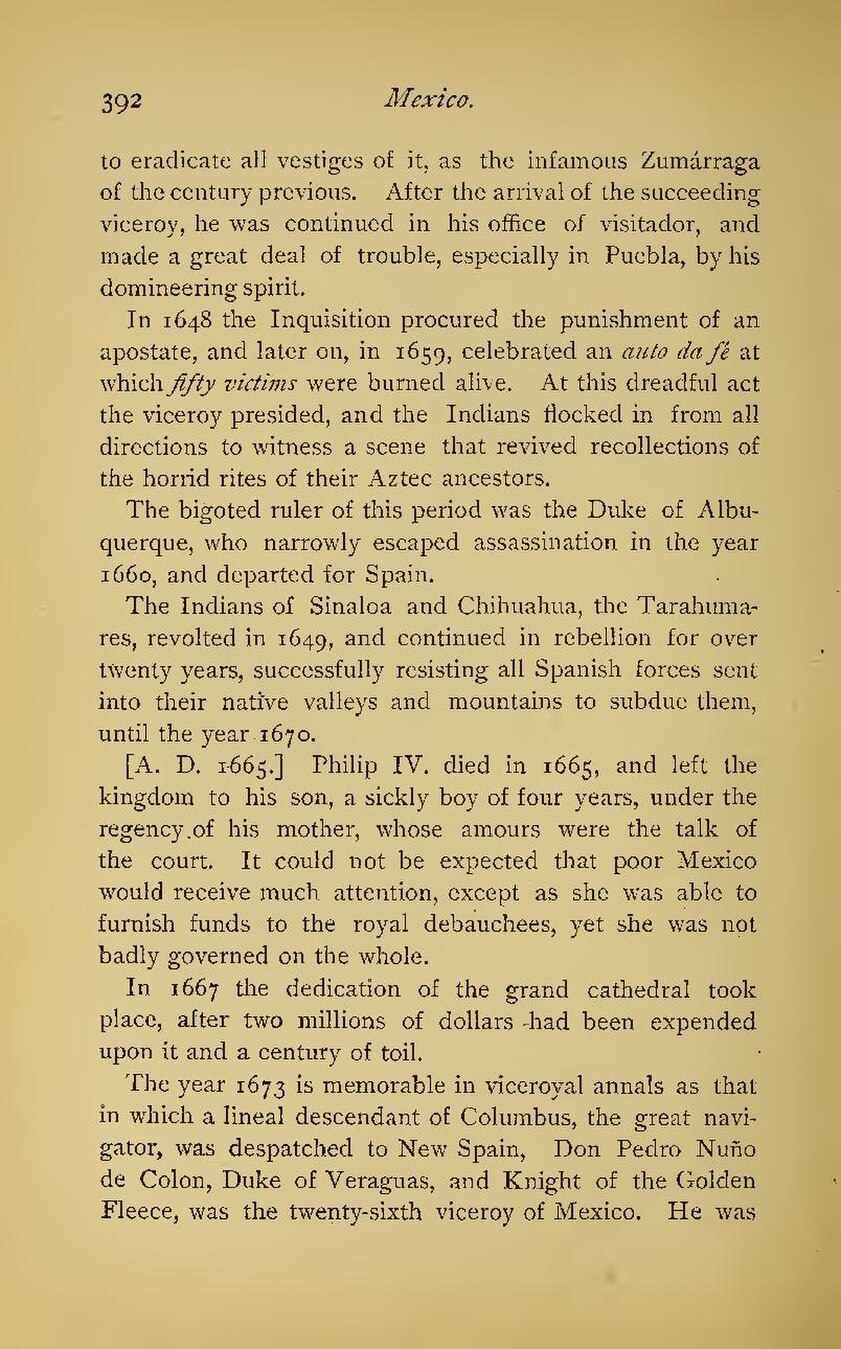to eradicate all vestiges of it, as the infamous Zumárraga of the century previous. After the arrival of the succeeding viceroy, he was continued in his office of visitador, and made a great deal of trouble, especially in Puebla, by his domineering spirit.
In 1648 the Inquisition procured the punishment of an apostate, and later on, in 1659, celebrated an auto da fé at which fifty victims were burned alive. At this dreadful act the viceroy presided, and the Indians flocked in from all directions to witness a scene that revived recollections of the horrid rites of their Aztec ancestors.
The bigoted ruler of this period was the Duke of Albuquerque, who narrowly escaped assassination in the year 1660, and departed for Spain.
The Indians of Sinaloa and Chihuahua, the Tarahumares, revolted in 1649, and, continued in rebellion for over twenty years, successfully resisting all Spanish forces sent into their native valleys and mountains to subdue them, until the year 1670.
[A. D. 1665.] Philip IV. died in 1665, and left the kingdom to his son, a sickly boy of four years, under the regency of his mother, whose amours were the talk of the court. It could not be expected that poor Mexico would receive much attention, except as she was able to furnish funds to the royal debauchees, yet she was not badly governed on the whole.
In 1667 the dedication of the grand cathedral took place, after two millions of dollars had been expended upon it and a century of toil.
The year 1673 is memorable in viceroyal annals as that in which a lineal descendant of Columbus, the great navigator, was despatched to New Spain, Don Pedro Nuño de Colon, Duke of Veraguas, and Knight of the Golden Fleece, was the twenty-sixth viceroy of Mexico. He was
